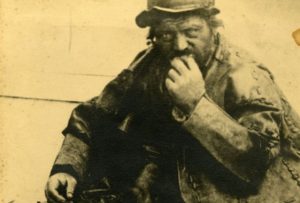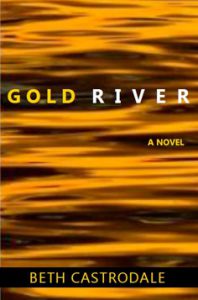Recently, I sat down to answer questions from folks who’d read advance copies of my novel In This Ground. It was a pleasure to discuss the book and other writing-related topics.
In This Ground tales place almost entirely in a cemetery. Why did you choose that setting?
I absolutely love cemeteries—always have. Starting when we were in first or second grade, a close friend and I used to wander around a cemetery near our homes in a suburb of Pittsburgh. We loved checking out the stones, reading the names on them out loud, and making up stories about the lives we imagined these people to have led.
The notion that cemeteries contain countless stories has stayed with me, and a few years ago I got this idea of treating a graveyard as a stage on which different dramas—those of the living and those who have died—could play out and intersect. That’s how In This Ground got started.
For more on why I decided to set the novel in a cemetery, check out this blog post.
Why did you decide to make the central character, Ben Dirjery, a gravedigger?
To me, Ben felt like the perfect connection between the living and dead within the world of the cemetery where he works. He tries to do his best by those buried there, by their friends and loved ones, and by members of the community who ask him such questions as, “Why don’t you guys offer green burials?”
Ben does whatever he can to advocate for these people, and for what he personally believes is best for the cemetery, even when that means pushing back against his managers. Although he’s a mere mortal, with all the attendant flaws, I think of him as a sort of demigod within the gates of the cemetery, which he regards as sacred ground.
A key conflict in the novel concerns whether a nineteenth-century eccentric, the so-called Unknown Vagrant, should be exhumed. How did you get the idea for the Unknown Vagrant and the controversy surrounding him?

While doing research for the novel, I came across accounts of a controversy over the exhumation of a mysterious nineteenth-century vagabond in Ossining, New York. He came to be known as Leatherman because of the suit he’d made for himself out of cast-off scraps of leather. And he became something of a legend because his unusual behavior.
As noted in a Village Voice article on Leatherman, “[e]very 30 days, traveling on foot, he’d complete a rigorously predictable circuit of some 360 miles between the Hudson and Connecticut rivers. He would regularly pass through what were then just small farming villages, living mostly off the charity of the townspeople. Farmers claimed they could set their watches by him; newspapers took note when he fell just a few hours behind his typical schedule.” Because Leatherman rarely spoke, no one was able to learn much about him.
In 2010, the Ossining Historical Society, which maintains the cemetery where Leatherman was laid to rest, announced plans to move his grave, which was believed to be dangerously close to a busy highway. The Historical Society also wanted to have Leatherman’s remains scientifically investigated to determine, among other things, his national origins. (Many people believed he was French or French Canadian.)
But the plans to exhume Leatherman and examine his remains resulted in huge opposition from those who believed that these actions would constitute serious violations of his privacy and dignity. The opponents’ arguments really fascinated me, and I loved the way they get at the notion that entitlement to privacy—and to respect for one’s personal space—doesn’t necessary expire upon death.
I wanted to put Ben (the gravedigger at the heart of In This Ground) at the center of a similar controversy, because it really tests his beliefs about what it means to be doing his best by both the living and the dead: what he sees as his most important mission at the cemetery.
What other research did you have to do for the book?
One really fun thing I did was spend a day with a gravedigger. I learned not just about the specifics of his job but also about some really strange goings-on at his cemetery. I talk about some of these in the blog post I mentioned earlier. I also did a good amount of additional research into the day-to-day responsibilities of gravediggers and other cemetery workers; on green burials (which the central character, Ben, hopes to offer); and on the challenges of keeping a non-profit cemetery financially and infrastructurally viable.
Coming back to the exhumation controversy in the book, I wanted to understand if or when a scientific argument could be made for not digging up a body. I was able to get really great insights on this subject from a renowned biological/forensic anthropologist, Daniel J. Wescott.
Also, at one point in the novel, a forensic anthropologist who helps Ben address the exhumation ordeal reflects on a transformative experience she had near Manikarnika Ghat, one of the sacred cremation grounds in Varanasi, India. So I did a lot of research into Varanasi in general and Manikarnika Ghat in particular. (Toward the end of their lives, many Hindus make a pilgrimage to Varanasi, believing that if they die and are cremated there, they will be liberated from the cycle of life and death and attain enlightenment.)
I could go on about further research I did into other subjects covered in the novel—yarn bombing and mushroom hunting, to name just two—but I’ll restrain myself.
What inspired you to write your previous novel, Marion Hatley?
For the benefit of folks who aren’t familiar with that novel, I’ll first say that it’s set in 1931, and over the course of the novel, the central character, Marion Hatley, invents an unusually comfortable corset. She also faces a lot of social disapproval for being more career-focused and sexually adventurous than what was deemed appropriate for the time.
My maternal grandmother, Cleo Coppock Brown, was very much in mind when I started writing the novel, and she happens to share Marion’s birth year (1897). Although Grandma received a college education (unusual for women of her time), she, like many of her peers, struggled against so many societal limitations that I can’t help but believe that some of her personal dreams—ones unconnected to the traditional roles of wife and mother—were thwarted. Through the character of Marion Hatley, I was able to explore the consequences of pushing back against some of the restrictions that Grandma and her peers faced.
Another inspiration for the novel was my mom’s descriptions of the uncomfortable corsets that Grandma wore daily, even as she did all the hard work of helping to keep a small farm running. An additional inspiration was that farm, which remains in my family and which, in my mind, is the setting for much of the novel. (I wrote an essay about the importance of the family farm to my development as a writer.)
What made you decide to become a writer?
I don’t feel like it was anything I actually decided. Back when I was a kid, I started making up stories to entertain myself. And I just kept going—with some significant interruptions when I was trying to advance myself professionally, save for a home, pay the bills.
As a kid, I used to create my own books: handwritten, staple-bound, and illustrated. For some reason, a lot of them were about haunted houses or castles. In one of the haunted castle books, I gave a lead role to a Dr. Mookhazin, who was about the size of a Jack Russell terrier, equal to a JRT in sassiness, and unkillable. The story has him hiding out in a balled-up windbreaker on a narrow country road, until he’s hit by the car of an unsuspecting family, whom he eventually lures to the castle. Dr. M is the character I remember best from my childhood writing, and every so often he still pops into my mind.
Who are your favorite fiction writers?
There are far too many to mention, but here’s a sampling of writers who were essential to my development as a storyteller: Mary Gaitskill, John Cheever, Denis Johnson, Lorrie Moore, Toni Morrison, Alice Munro, Flannery O’Connor, Marilynne Robinson, and Edith Wharton.
What are you reading now?
I’m in the middle of reading several books that I’m planning to review for my SmallPressPicks.com website. I’ve been blown away by the novels and story collections that small presses have been putting out, and if people want to learn more about some of my recommendations, they can visit the site.
In This Ground is being published by a small press, Garland Press. What has that experience been like?
Very positive. The novel has received great care and attention from Laurel Dile King, publisher and editor of Garland Press, and from Garland’s advisory board. I also feel very fortunate that I was able to take part in decisions about the book’s cover. Often, large publishers give authors little or no say about covers.
What are you working on now?
I’m writing my very first crime novel, tentatively titled Broken Sister. In brief, it brings together aspects of a road novel and a Western.
Why did you decide to write a crime novel?
I want to keep myself entertained, just as I tried to do when I was a kid making up stories. For me, that means never writing the same type of book twice. Once I finish the crime novel, I’m pretty certain my next project will be a book-length ghost story. (Paging Dr. Mookhazin?) I have in mind a psychological chiller in the vein of The Turn of the Screw.
What interests me most in anything I read or write are characters’ interior lives. Literary fiction is said to focus on that, at least according to many of the widely varying definitions of that category. But I believe that genre fiction can, too. In any case, I’d like to think that characters’ interior lives are central to the books I’ve already written, and I expect that will hold true for all of my future fiction, regardless of its subject matter.
Is there anything else you’d like to say?
I think we’ve covered all of the important points, but I hope that readers will get in touch with me at bcastrodale@gmail.com if they have any other questions. Anyone who’d like more insights into the books and stories I’m working on, or into my writing process in general, can visit this link and subscribe to my e-newsletter. (Subscribers get a free e-book, my novel Gold River.)
